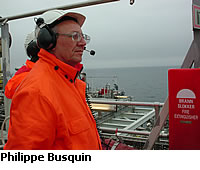In the contemporary landscape of global science and technology, the need for innovative frameworks and increased funding has never been more pressing. With the ongoing challenges posed by climate change, public health crises, and technological disruptions, European Union leaders, particularly those within the scientific community, must confront the urgent question: How can the EU ensure it maintains its competitive edge in the global scientific arena? This query was notably articulated by the European Commissioner for Science and Research, Philippe Busquin, who has championed the necessity for a robust push toward enhanced funding for scientific research.
Busquin’s impassioned call for a scientific surge within the European Union resonates with a broader recognition of the critical role that public investment plays in nurturing innovation and fostering collaboration among member states. The crux of his argument lies in the potential of framework funding—specifically the EU’s Framework Programmes (FP)—to serve as a catalyst for groundbreaking research and technological advancements. Historically, these frameworks have provided the financial scaffolding necessary for collaborative projects, thereby enabling institutions and researchers from diverse backgrounds to coalesce around common goals.
Framework funding, exemplified by the Horizon 2020 initiative, has facilitated significant advances in fields such as renewable energy, biotechnology, and information technology. By pooling resources and expertise, the EU has been able to spearhead initiatives that would have been prohibitively ambitious if tackled in isolation by individual nations. However, despite these successes, challenges remain. The underlying question is whether the current funding structures are sufficiently robust to scale up operations in the face of escalating global challenges. Are the existing frameworks adequately designed to meet the science demands of the 21st century?
One of the pivotal challenges highlighted by Busquin is the disparity in funding distribution among EU member states. Countries with more developed scientific infrastructures tend to attract a disproportionate share of research financing, leaving smaller, emerging nations at a disadvantage. This inequitable distribution can stifle innovation in regions that may otherwise contribute significantly to the EU’s scientific portfolio. The risk here is twofold: not only do these disparities create uneven development within the EU, but they also risk diminishing the union’s overall scientific stature on the global stage.
In addressing this issue, Busquin advocates for a paradigm shift—one that embraces inclusivity and promotes a more equitable funding allocation model. Such a model would not only bolster scientific capabilities across the continent but would also engender a spirit of collaboration and knowledge sharing. This shift towards a more united front echoes the historical context of the EU itself, which was birthed from the ashes of conflict, aspiring to foster unity through economic and social interdependence.
Moreover, the interrelation between funding and innovation cannot be overstated. Funding is but a means to an end—an essential ingredient that empowers researchers to embark on ambitious projects and embrace risks. Busquin posits that increased investment in science is not merely an expenditure but an investment in the future—an opportunity to solidify the EU’s position as a global leader in research and innovation. Yet, how can we measure the efficacy of this investment? How do we ascertain that funds are utilized efficiently to drive substantive scientific breakthroughs rather than administrative overhead?
To address these questions, transparency and accountability in the management of research funds become paramount. Initiatives aimed at establishing rigorous evaluation mechanisms will be vital to ensure that financial resources are allocated to projects that exhibit genuine transformative potential. This not only instills confidence in stakeholders but also demonstrates a commitment to maximizing the societal relevance of scientific inquiry.
Furthermore, collaboration with the private sector offers an additional avenue to bolster funding. Public-private partnerships have the potential to create synergies that catalyze investment and drive innovation. As industries increasingly recognize the value of scientific research in addressing practical challenges, they are likely to invest in research initiatives that align with their strategic objectives. In this ecosystem, the role of the EU becomes that of an enabler, creating conducive environments where academia and industry can intersect to explore novel ideas.
Busquin also emphasized the importance of interdisciplinary approaches in research. In an age marked by complex challenges, solutions often reside at the intersection of diverse scientific disciplines. Facilitating collaborations that transcend traditional boundaries can lead to innovative approaches tailored to meet specific societal needs. By fostering an environment that encourages multidisciplinary research, the EU can harness the collective expertise of its scientific community to tackle pressing issues effectively.
As the conversation around science funding escalates, one must ponder—will the EU heed the call for increased financial commitment to research, or will it continue to grapple with the consequences of underinvestment? The trajectory of the EU’s scientific landscape hangs in a delicate balance, one that necessitates decisive action and visionary leadership. In light of Busquin’s advocacy, the momentum for a paradigm shift may well be gathering steam, yet the commitment to comprehensive funding reform must follow suit.
In conclusion, the dialogue spearheaded by Philippe Busquin represents a clarion call for a comprehensive reevaluation of the EU’s scientific funding landscape. The potential for transformative change is palpable, yet the challenge remains formidable. As EU member states contemplate the implications of increased financial investment in research, one must remain vigilant. Are we ready to embrace the possibilities of enhanced framework funding, or will we allow this pivotal moment to slip through our fingers?






